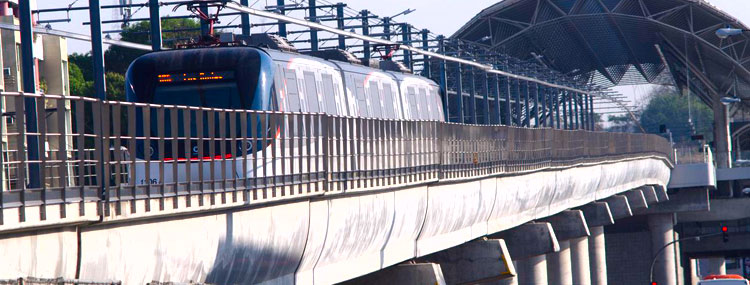Panama Metro generates more than 5,000 employments
The System's construction and entry into operations enables the increase of national and foreign labor offer directly and indirectly, of which 80 percent corresponds to Panamanian work force
A new infrastructure work facilitates the mobility of approximately 1.4 million inhabitants of Panama City. This refers to Line 1 of the Metro, whose construction generated more than 3,200 direct and close to 1,800 indirect jobs. Eighty percent of these jobs correspond to Panamanian work force.
Twelve stations, seven underground and five elevated stations communicated by 19 trains of three cars each, make up the first Metro line, one of the most efficient urban transportation systems as it has the capacity to mobilize 30,000 people per hour..
The system is a contribution to urban mobility. It produced a significant change in the life of Panamanians, and contributes to reduce traffic congestion in trunk arteries. The reduction of traffic has favored the flow of circulation of people and vehicles.
According to the Panama Metro Secretariat, one of the main benefits of the system is that it occupies 100 times less space than private transportation. That is, a train car has an approximate capacity of three buses, which is equivalent to 100 private vehicles in circulation..
With respect to the environment, it stands out for the contribution to the carbon footprint, an indicator that measures the amount of greenhouse gasses (GHG) generated and emitted by a company, project, product, or service. With the measurement of the carbon footprint, the Line 1 project of Panama's Metro positions itself an infrastructure work with high sustainability and environmental international standards.
Ligia Castro, the Institution's Director of Environment and Climate Change, stated that "CAF is committed to the environment because it considers it to be a key factor for sustainable development and regional integration. For this reason, we consider that implementing the measurement of the carbon footprint in the projects that our institution finances from now on, will be an important point for the change of the productive model, aimed toward economies low in carbon and socially inclusive".
With the construction and entry into operations of the Metro, CAF, Development Bank of Latin America, contributes to the development of infrastructure in the region, the improvement of public transportation, and the quality of life of Panamanians as a main source of multilateral financing by contributing USD 600 million of a total of USD 1.88 billion.
The expansion of the system is foreseen with the construction of Line 2 and the integration of the Metro Bus, in accordance with the investments estimated in the country's Master Plan, which exceeds USD 10 billion until 2035.
CAF's more recent content

CAF, ECLAC, IDB and PAHO Promote Sustainable Development in the G20
The Regional Organizations of the Americas congratulate Brazil on its successful G20 Presidency, highlighting its leadership on key issues such as poverty, governance, and climate change. They also reaffirm their commitment to actions that promote equity and development in the region.
Urgent Call for Action to Safeguard Caribbean SIDS at CAF Symposium
As the global community grapples with the escalating climate crisis, Caribbean Small Island Developing States (SIDS) are running out of time to secure critical investments and support needed to strengthen their economies and protect vulnerable communities from the intensifying impacts of climate change. With the window to take decisive action rapidly shrinking, CAF - Development Bank of Latin America and the Caribbean, in partnership with the Commonwealth Secretariat and the Antigua and Barbuda High Commission, brought together key stakeholders for a symposium in London to address the critical vulnerabilities Caribbean SIDS face.












